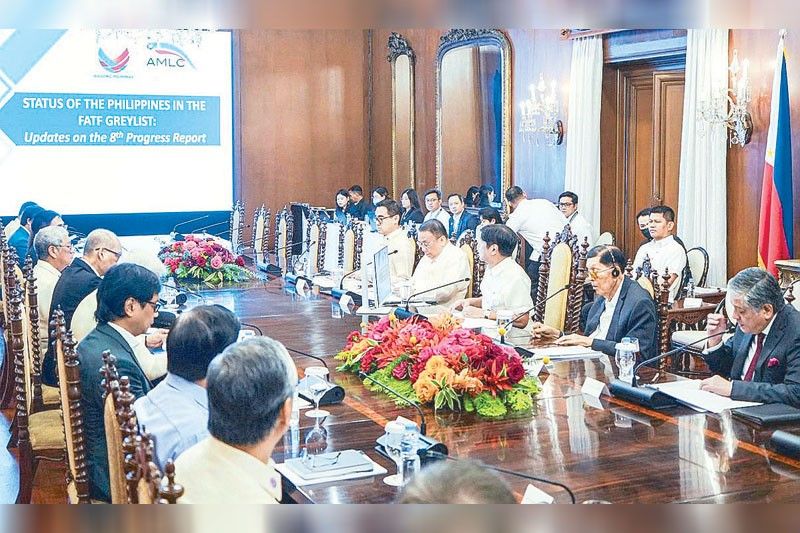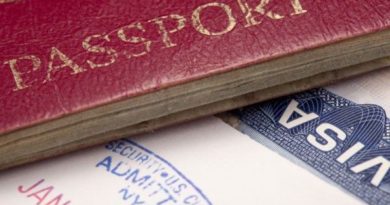Ano Ba Talaga Kuya? | #1s Are Marcos’ Hidden Wealth Abroad Returning in the Philippines- Marcos wants Philippines out of FATF gray list
#1s Are Marcos’ Hidden Wealth Abroad Returning in the Philippines again-


HEADLINES
Marcos wants Philippines out of FATF gray list

President Marcos presides over a sectoral meeting at Malacañang yesterday to discuss the status of the Philippines in the Financial Action Task Force’s gray list.
MANILA, Philippines — The country should exit from the gray list of global anti-dirty money watchdog Financial Action Task Force (FATF) by October this year, President Marcos said yesterday, as he ordered the Anti-Money Laundering Council (AMLC) and concerned agencies to put measures in place to make this happen.
“We’ve directed the AMLC to accelerate action plans to combat money laundering and counterterrorist financing, and to file cases against violators,” the President said on Facebook.
“We’re committed to safeguarding our OFWs by making their transactions safer, reducing costs and easing regulatory burdens to support them,” he added.
AMLC executive director Matthew David said the President issued the order during a meeting at Malacañang yesterday.
The order was also addressed to Bangko Sentral ng Pilipinas Governor Eli Remolona Jr.
“The President has reiterated the government’s high-level political commitment and directed all government agencies concerned to swiftly address the remaining strategic deficiencies identified by the FATF in relation to the gray listing of the Philippines,” David said at a press conference.
“However, since we already did not meet the deadline of January 2024, we’re still in the gray list,” he said.
He said a January exit was a self-imposed deadline of the government, which failed to meet the original January 2023 deadline.
“Our aim, the aim of the government, is to exit the gray list by January 2024. That was a self-imposed deadline,” David said. “We are still hopeful that we will exit the gray list this year, 2024.”
The Paris-based FATF re-included the Philippines in the gray list in June 2021 after the country failed a mutual evaluation by Asia Pacific Group on Money Laundering.
The body had identified 18 deficiencies in the country’s measures against money laundering and terrorist and proliferation financing. Of the total number, eight are still outstanding.
The remaining eight action item plans that the Philippines has to address include effective risk-based supervision of non-financial businesses and professions like lawyers, accountants, real estate developers and brokers; controls to mitigate risks associated with casino junkets; enhancing and streamlining of access to beneficial ownership information and taking steps to ensure that the information is accurate and up to date; demonstrating an increase in the money laundering and terrorism financing investigations and prosecutions; application of cross-border measures to all main seaports and international airports in the country.
“The most challenging action item is regarding terrorism financing prosecution. We need to file more terrorism financing cases and the ones in charge of complying with these action items are the law enforcement agencies, including the AMLC,” David said.
“We should increase our money laundering investigation as well as terror financing as well as prosecution. We should demonstrate that cross border measures were applied in all seaports and airports, including false declaration of confiscation and action,” he added.
The gray list contains countries or jurisdictions under increased monitoring and are required to actively work with the FATF to address strategic deficiencies in their regimes to counter money laundering, terrorist financing and proliferation financing.
A jurisdiction under increased monitoring is required to swiftly resolve identified strategic deficiencies within agreed timeframes.
There are 23 countries in the gray list, including the Philippines.
“The Philippines is aiming to address all these deficiencies within 2024 and to trigger the exit process from this FATF gray listing,” he added.

Blacklist
David emphasized that the longer the Philippines remains on the gray list, the higher the risk that it would enter FATF’s black list.
The black list contains countries or jurisdictions with “serious strategic deficiencies to counter money laundering, terrorist financing and financing of proliferation.”
“Of course, we don’t want to be in the blacklisted jurisdiction. And if we will be on the blacklisted list, there are repercussions to that and one of the repercussions is the effect on our transactions of our OFWs (overseas Filipino workers),” he pointed out.
“Our OFWs usually send remittances to their families here in the Philippines, if we will be blacklisted… the FATF (would) impose countermeasures on the Philippines and international financial transactions of Filipinos abroad,” the AMLC chair said.
Such scenario, he said, could lead to higher costs, additional and stringent requirements and denial of transactions.

“We do not want that to happen, so all government agencies are aiming to address those deficiencies, eight remaining action item plans, and eventually exit the gray list this year,” he maintained.
Getting stuck in the gray list, David pointed out, may also affect the Philippines’ credit rating and foreign direct investments.
“Basically there’s already a reputational risk on the Philippines, particularly on the economy. It may affect our credit rating. As you very well know, the World Bank and even the IMF (International Monetary Fund) is also looking into the status of the Philippines regarding the gray list,” he said.
“It might also affect foreign direct investment in the Philippines because if you don’t exit the gray list they might think that our AML/CTF (anti-money laundering/counterterrorism financing) system is not adequate enough or sufficient enough or strong enough,” he explained.
David said the Philippines has already complied with the technical compliance aspect, citing the passage of the Anti-Terrorism Act and amendments to the Anti-Money Laundering Act.
Last October, Malacañang issued Memorandum Circular No. 37, requiring urgent implementation of the government’s National Anti-Money Laundering, Counter-Terrorism Financing and Counter-Proliferation Financing Strategy 2023-2027 and ordering concerned agencies to support efforts against money laundering and terrorism financing.










